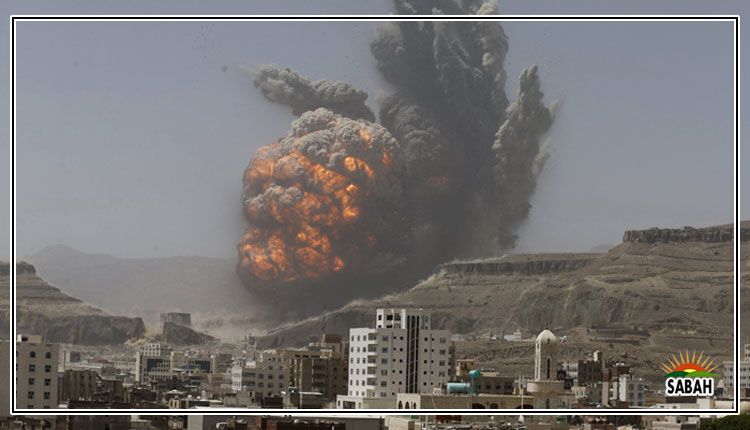A geopolitical cauldron…Zahid Hussain
YET another authoritarian regime has fallen. The Syrian rebellion has swept away the Assad family’s 53-year tyrannical rule.
It was a protracted struggle that had left hundreds of thousands of people dead and displaced millions. But the end was swift. A demoralised Syrian army melted away in the face of the rebel onslaught. Bashar al-Assad has fled and the country awaits a new political order.
What happens next will decide the fate of the fragmented nation and will also have far-reaching geopolitical implications that could drastically alter the political map of the Middle East. Syria has long been a geopolitical cauldron with various contending regional and world powers being directly or indirectly involved in its civil war. The overthrow of the Assad regime has drastically changed the regional power matrix.
A new power game seems to have already started, with some regional countries vying for influence over the course of Syria’s political trajectory. The fall of one of the world’s longest dictatorships in modern times has come at a point when the entire region is in deep turmoil. Israel’s ongoing genocidal war in Gaza and its military action against Lebanon has made the situation extremely dangerous. The Zionist regime, which has been engaged in an undeclared war against Syria for long, is now taking full advantage of the prevailing uncertainty there and has extended its occupation of the border region. Israel’s latest military action has alarmed countries in the neighbourhood.
However, the most important question is what happens in Syria now. So far, no major incident of violence has been reported from any part of the country after the fall of Bashar al-Assad. But the situation is tenuous, with disparate rebel militias controlling the country. Will these groups, with their differing interests and external links, agree on a common agenda for a future political set-up? Some of them are proxies of regional countries, and not independent actors. That makes any transition extremely complex.
The most powerful group that has spearheaded the uprising is the Hayat Tahrir al-Sham (HTS). A breakaway faction of Al Qaeda, it was designated a terrorist group by the US, Turkiye and several other countries. Although the leader of the group, Ahmed al-Sharaa, whose nom de guerre is Abu Mohammed al-Jolani, seems to have moderated his views, his past association with transnational jihadi organisations, including the so-called Islamic State group, has attracted international suspicion.
There is also a fear that the change could lead to another period of authoritarian rule dominated by radical Islamists. But the recent statement by the group leadership may dispel those concerns. Moreover, the other groups which dominate parts of the country may not allow the establishment of a radical religious order.
Among other groups who played a key role in bringing down the Assad regime are the Syrian National Army, backed by Turkiye, and the Kurdish Peoples Protection Units, that controls a part of the territory in the north. It remains to be seen if these diverse groups can agree on a democratic political process. A transitional set-up seems to be in the works but the next biggest challenge would be to hold elections to establish a representative democratic order in the country.
It will certainly not be easy in a divided country that has just evicted a family dictatorship of long standing. Transition is never easy in a fractured political environment with a complex mosaic of power groups espousing diverse ideologies and interests. The deep involvement of external forces will be a strong factor in how things develop in post-revolution Syria.
The overthrow of the Assad regime will reshape regional politics. Several countries, including the US, Russia, Iran, Israel and Turkiye, have a military presence in Syria. Russia and Iran had for long militarily backed the Assad regime in fighting the rebellion that begun 13 years ago. With direct military support from these two countries, the regime managed to contain the revolt but could not entirely crush the rebel forces. The inability of these countries to come to the regime’s rescue at the end led to Assad’s fall.
While Russia is bogged down in its own war in Ukraine, a badly weakened Iran, facing a setback in Israel’s war against Tehran’s close ally Hezbollah in Lebanon, was not in a position to help the tottering regime. Tehran seems to have come out as the biggest loser in the fast shifting sands of regional geopolitics in the aftermath of the Syrian dictatorship’s overthrow.
Moscow is still keeping its airbase and naval facility in the country, but it will not be possible for it to maintain its military presence in the country for long. Moscow’s stakes have further fallen with its decision to provide asylum to the ousted Syrian leader and his family. Among the regional countries, Turkiye perhaps wields more power to influence the future course of politics in Syria, given its significant clout with some of the rebel groups in control of certain areas in the country. Ankara also has a military presence in Syrian territory.
America, too, has maintained a military base in Syria’s Kurdistan region, with some troops there ostensibly to counter the IS, which is still active in some parts of the country. But Israel remains the biggest destabilising factor in the region, taking full advantage of the uncertain situation in Syria.
Since the fall of the Assad government, Israel has seized more territory in Syria’s Golan Heights, tearing up the 1974 agreement between the two countries. But it doesn’t stop there. Some ministers of Israel’s far-right government are now talking about extending the push further to Damascus. Meanwhile, Israel has continued air strikes on military bases deep inside Syria. It is a dangerous situation. Such bellicosity could affect Syria’s search for political stability and threaten the security of the entire region.
The writer is an author and journalist.
COURTESY DAWN












